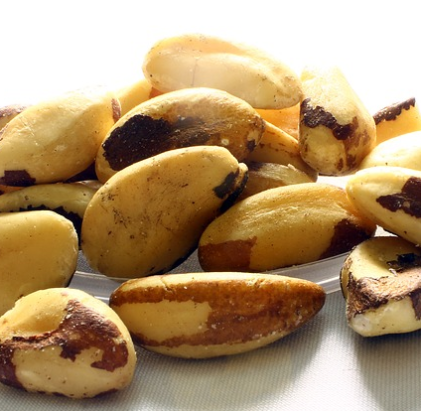- Phytopedia
- NUTS
- Brazil Nut

GEEK TALK
BUT WE TALK
DID YOU KNOW?
Its name belies the fact that Bolivia and Peru are responsible for more than one half the world’s supply of the Brazil nut and it is illegal to cut down any brazil nut tree.
Brazil nuts grow on massive trees that reach 160 feet and have a typical lifespan ranging from 500-700 years though it takes roughly 300 years before the tree begins to bear any fruit.
The seed of the fruit, or the nut itself, grow in 4-6 pound pods that are similarly shaped to a coconut and contain 30 seeds in each one. Because the tree is deciduous, when ripe the pod falls off of the tall tree and strikes the ground with enough force to kill a man, making the nut harvest a trickier than normal business.
While Brazil nuts have the highest fat content of any nut, it is filled with monounsaturated fats which are considered good fats.
The oil from the brazil nut is used in various items such as cosmetics and some paints and is often used in salad dressings. The nut is delicious to eat raw, roasted, salted or sweetened.
KITCHEN PHARMACY
- Like many nuts the Brazil nut is very helpful for those looking to lower their bad cholesterol.
- In addition, its high amounts of selenium help to prevent some cancer types as well as coronary heart disease.
GEOGRAPHICAL DISTRIBUTION
Grown for centuries in the vast Amazon rainforest, the Brazil nut has long been a source of nutrition for those near the rainforest. Indigenous tribes in South America long used the Brazil nut as a source of nutrition but also found various uses for the nut’s oil and husk.
In the 1500s, the nut was introduced to Europe and the Spanish called the nut “Almonds of the Andes.”



